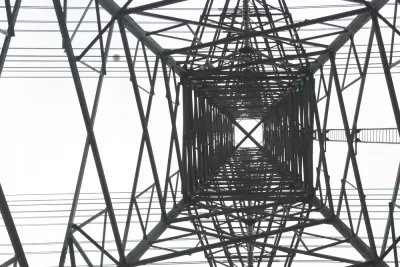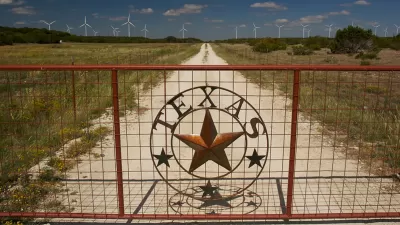The U.S. power system is split into three separate sections with very little overlap. A more seamless infrastructure could deliver benefit, but a new study, still unpublished, is the first to take on the question of how much benefit.

The National Renewable Energy laboratory (NREL) worked with partners to publish a report detailing the costs and the benefits for building an integrated energy infrastructure in the United States.
According to a post sharing the "Interconnections Seam Study," U.S. energy is split into three separate systems, which work independently and share very little electricity. The study, therefore "aims to quantify the value of strengthening the connections (or seams) between the regions to encourage efficient development and utilization of U.S. energy resources" and also to assess "the degree to which interconnection can facilitate a more reliable, resilient, sustainable, and affordable U.S. electricity system."
The research team has published preliminary results [pdf] and has submitted the study to the journal IEEE Transactions on Power Systems.
FULL STORY: Interconnections Seam Study

Alabama: Trump Terminates Settlements for Black Communities Harmed By Raw Sewage
Trump deemed the landmark civil rights agreement “illegal DEI and environmental justice policy.”

Planetizen Federal Action Tracker
A weekly monitor of how Trump’s orders and actions are impacting planners and planning in America.

The 120 Year Old Tiny Home Villages That Sheltered San Francisco’s Earthquake Refugees
More than a century ago, San Francisco mobilized to house thousands of residents displaced by the 1906 earthquake. Could their strategy offer a model for the present?

In Both Crashes and Crime, Public Transportation is Far Safer than Driving
Contrary to popular assumptions, public transportation has far lower crash and crime rates than automobile travel. For safer communities, improve and encourage transit travel.

Report: Zoning Reforms Should Complement Nashville’s Ambitious Transit Plan
Without reform, restrictive zoning codes will limit the impact of the city’s planned transit expansion and could exclude some of the residents who depend on transit the most.

Judge Orders Release of Frozen IRA, IIJA Funding
The decision is a victory for environmental groups who charged that freezing funds for critical infrastructure and disaster response programs caused “real and irreparable harm” to communities.
Urban Design for Planners 1: Software Tools
This six-course series explores essential urban design concepts using open source software and equips planners with the tools they need to participate fully in the urban design process.
Planning for Universal Design
Learn the tools for implementing Universal Design in planning regulations.
Clanton & Associates, Inc.
Jessamine County Fiscal Court
Institute for Housing and Urban Development Studies (IHS)
City of Grandview
Harvard GSD Executive Education
Toledo-Lucas County Plan Commissions
Salt Lake City
NYU Wagner Graduate School of Public Service




























